IN CONVERSATION WITH:
IAN EDWARD WHITE
IAN EDWARD WHITE
(11.03.23)
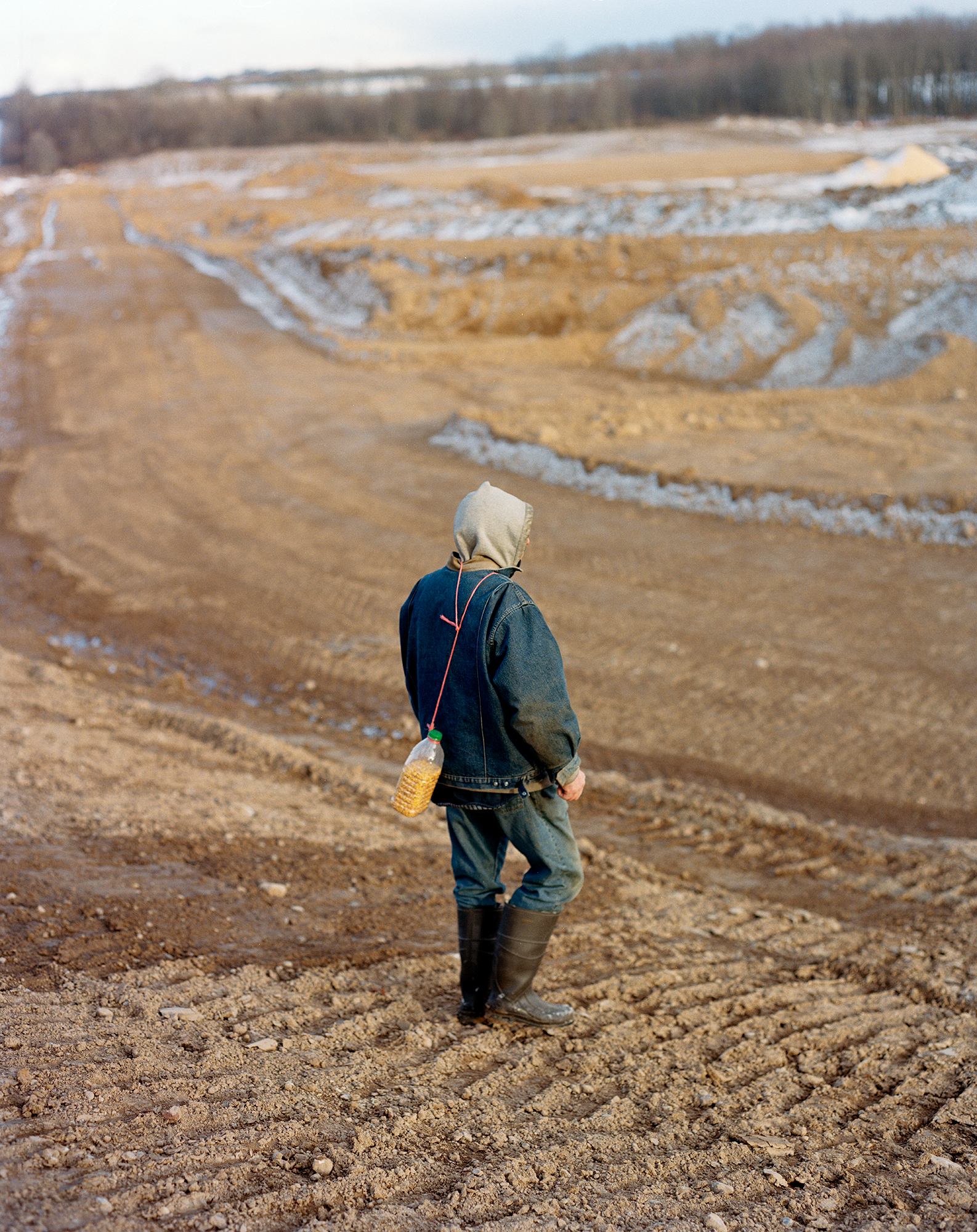
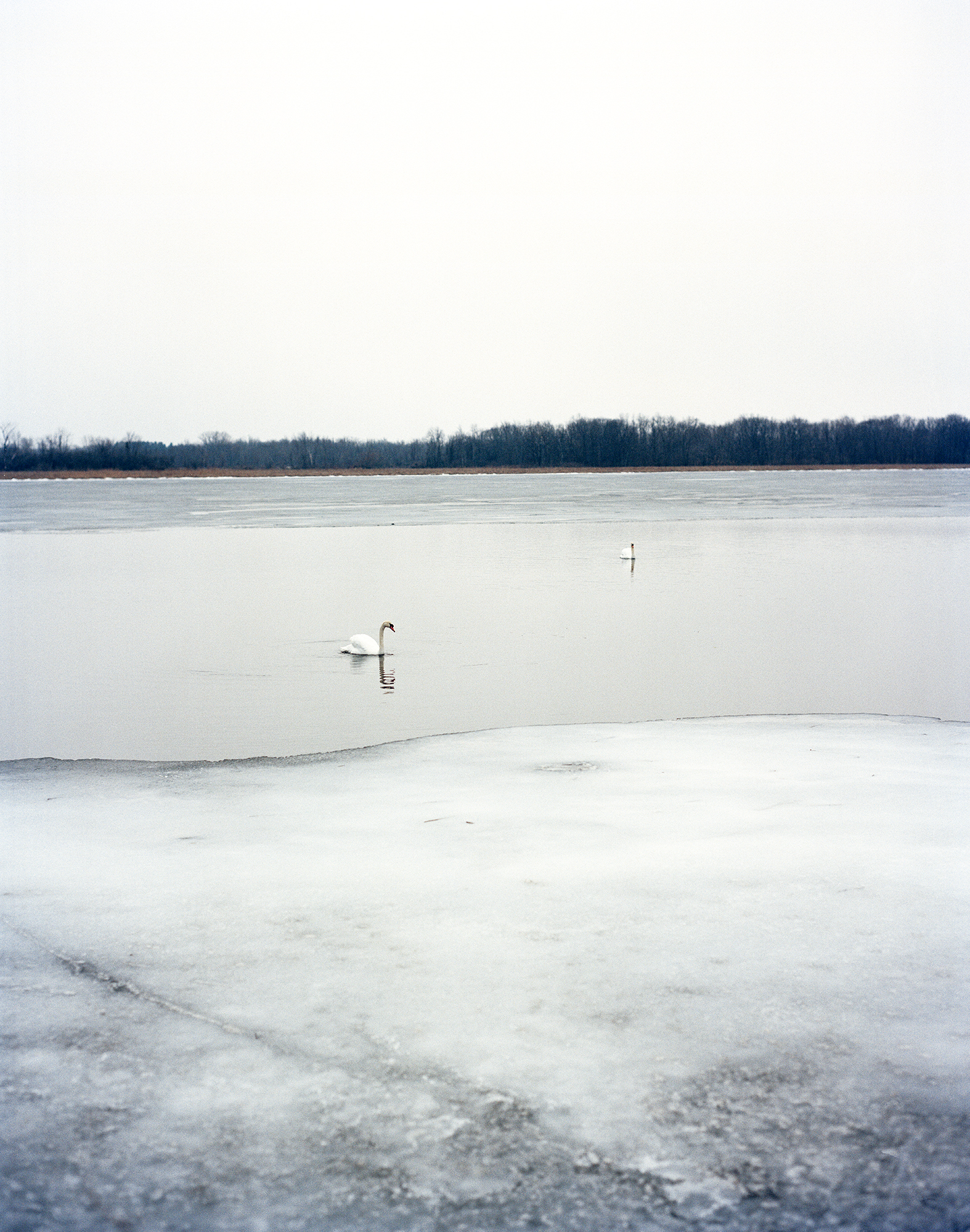


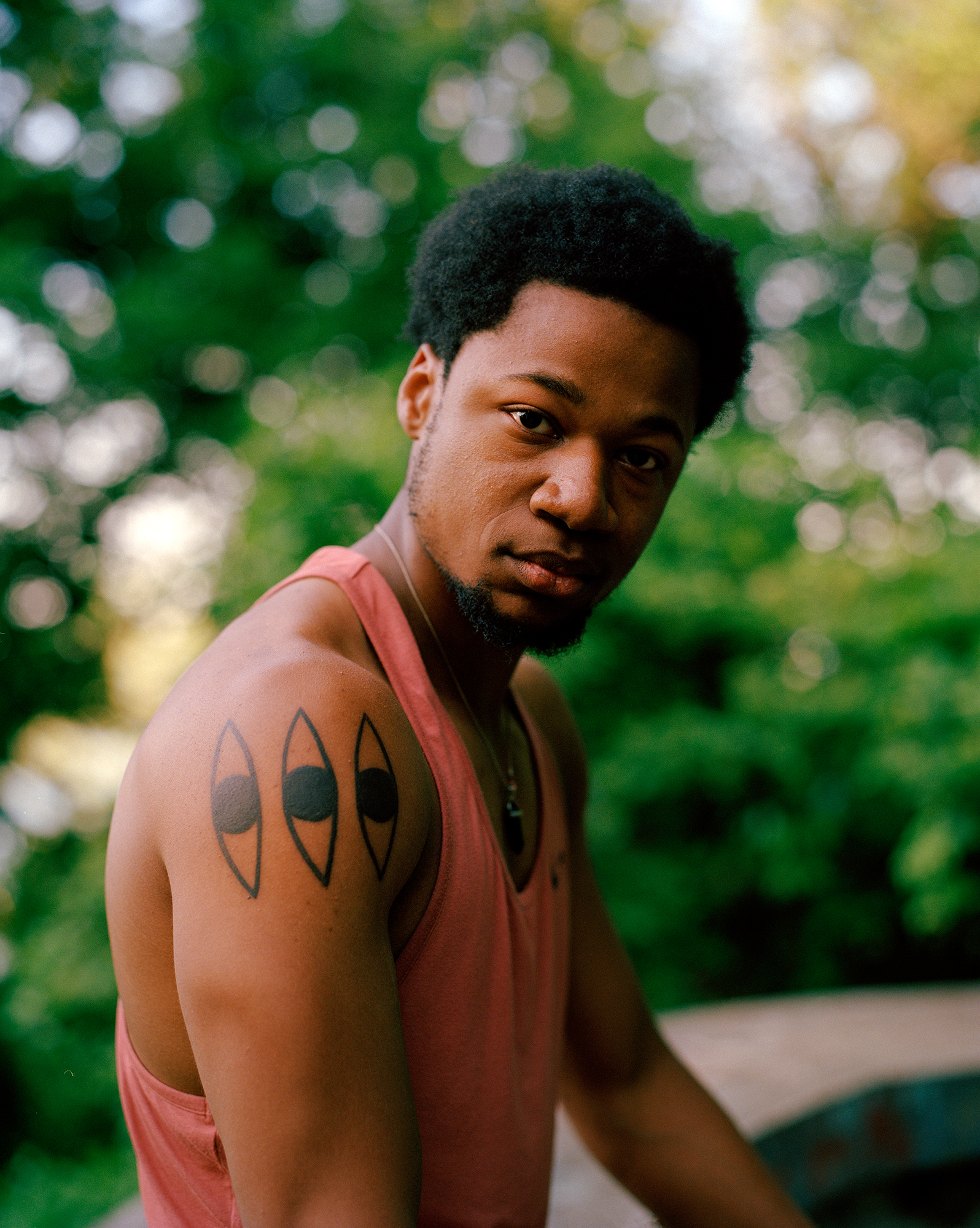
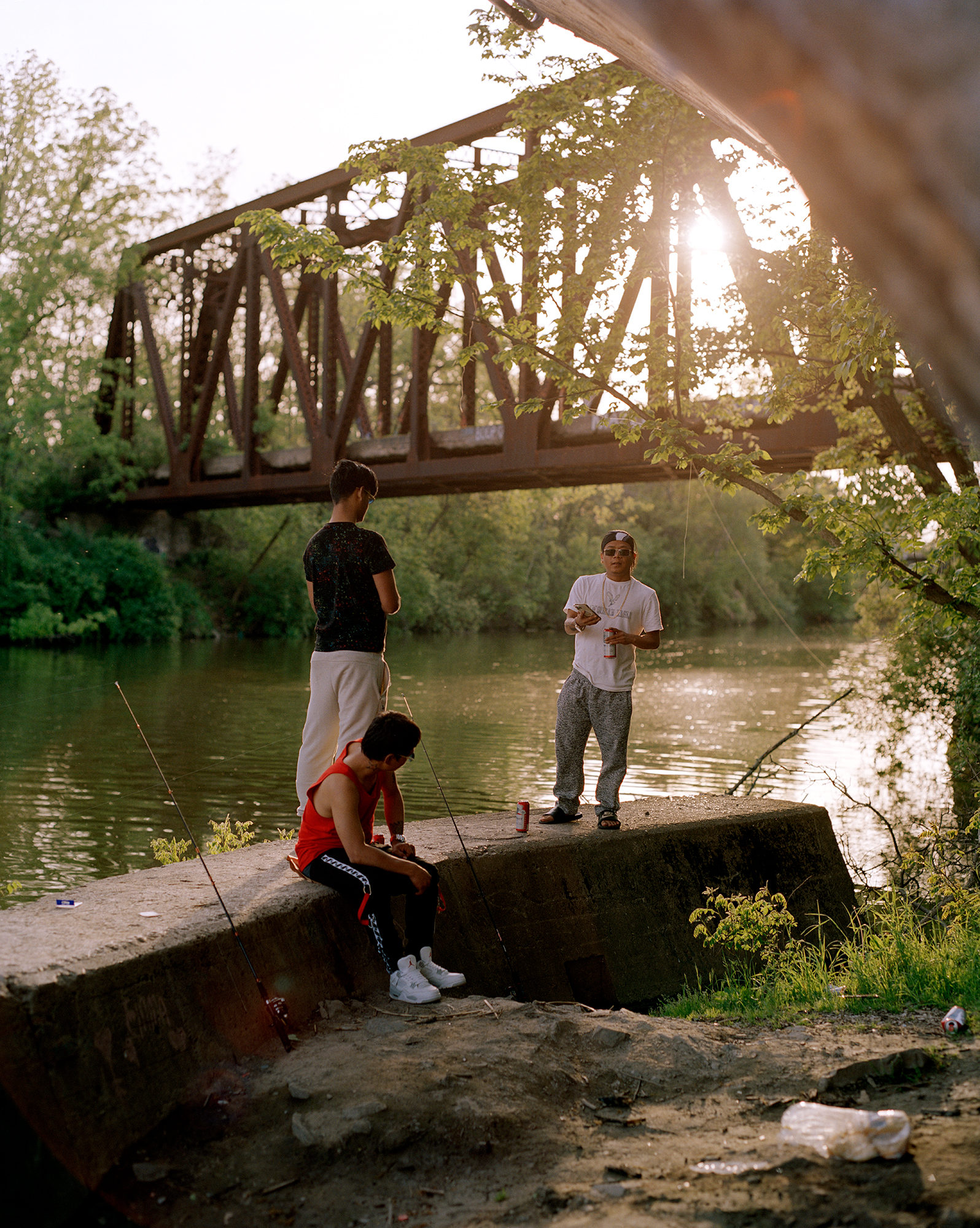

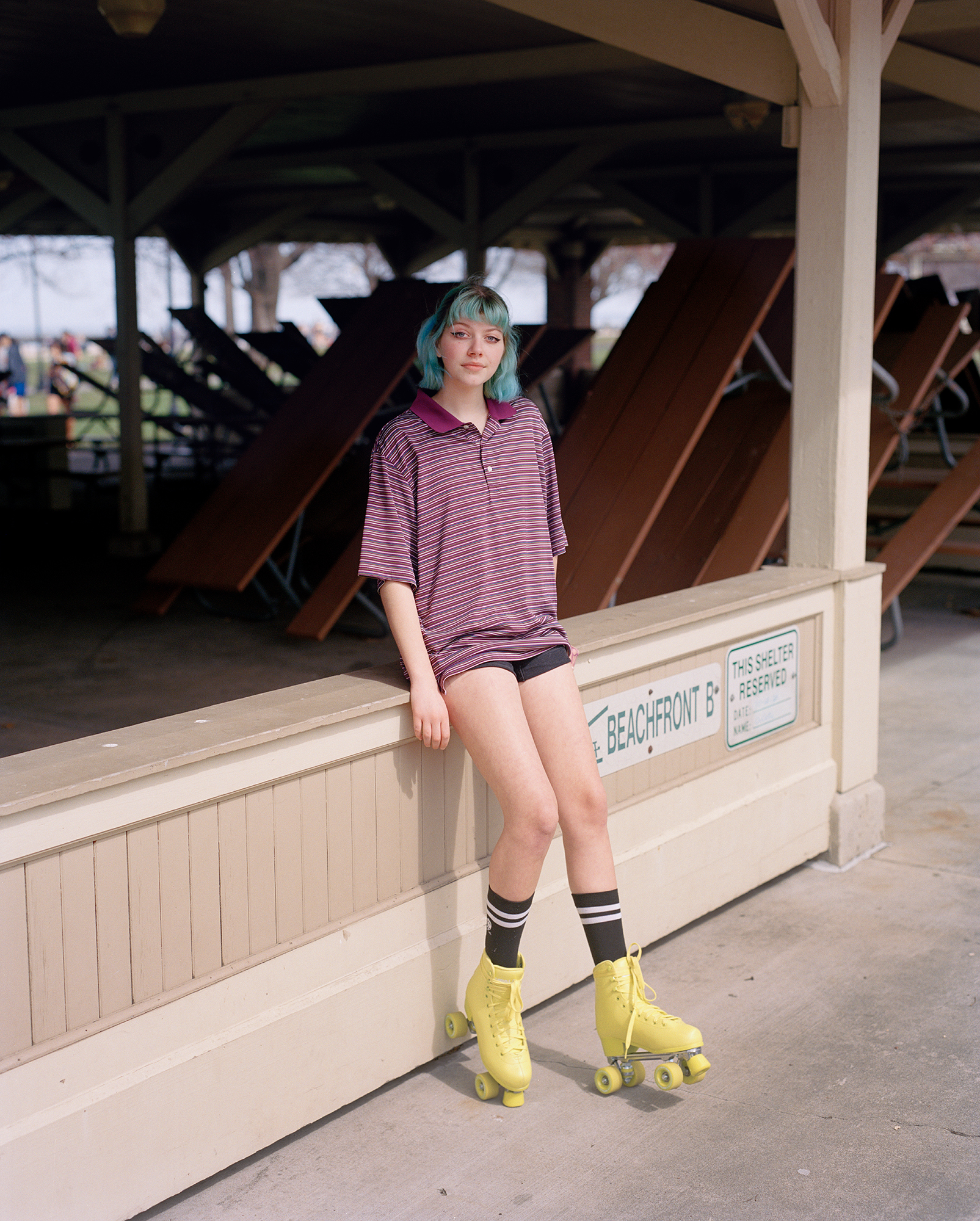
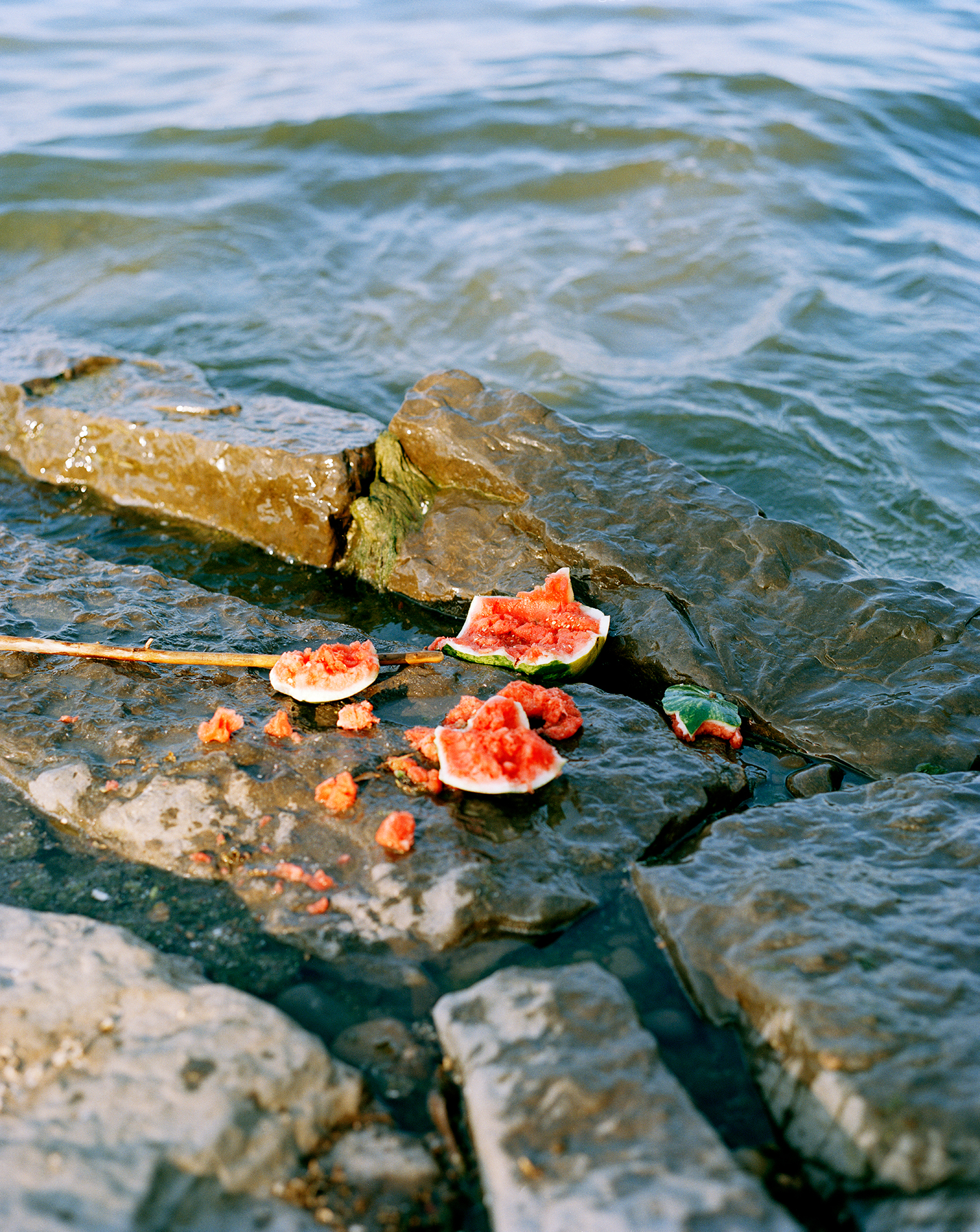
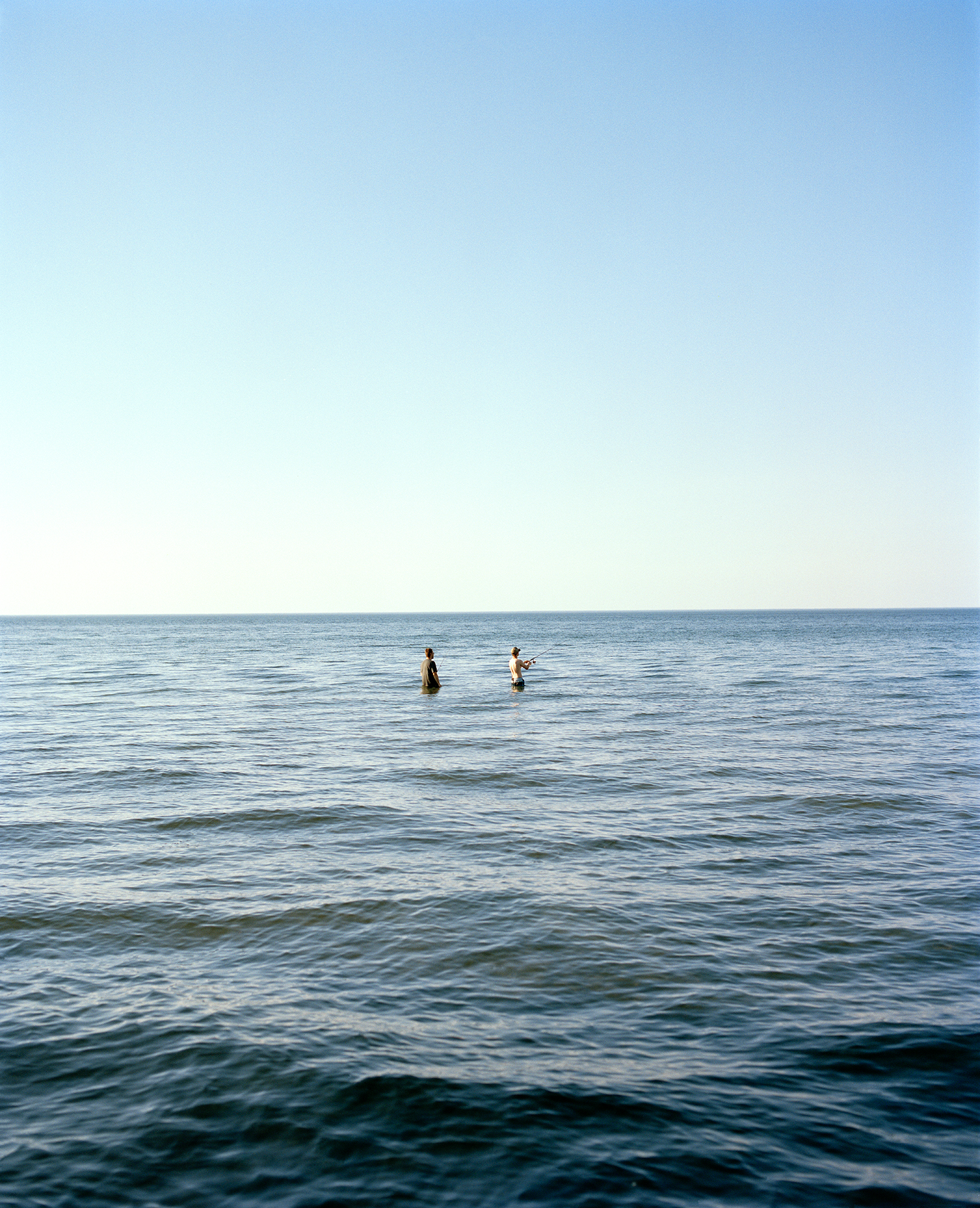


In Conversation with Adrian J. Song
Adrian Song: Thank you so much for your time, Ian. I’m really in awe of your project “I Heard the North Wind Call Your Name”. Could you tell us more about the process of making this work.
AS: Hearing you talk about your approach makes me extremely curious about what attracted you to photography in the first place. How did this journey begin?
AS: It sounds like a period of such excitement and wonder. Thank you so much for sharing that, Ian! You talk about chasing a particular feeling, and it seems really prevelant in this project as well. It really is a perfect example of not necessarily having to explain yourself in order to communicate something profound, or to have a profound effect.
AS: I still get extremely self-concious about all of this, so it’s really encouraging to hear how you’ve come to embrace the beauty of your work for what it is instead of focusing on what it’s not. It’s also refreshing that you describe the project as an interpretation rather than a documentation. In saying that, I’m interested in your interpretation of these images now.
AS: “It’s a little bit like falling in love with someone really quickly”, I love that. You mention feeling like you have unfinished business, I’m wondering if you’ve felt like a project was ever truly finished?
AS: Hearing about all these pivotal moments you’ve experienced while in school makes me really happy that you now teach photography at Middle Tennessee State. How has this experience been?
AS: It sounds like you and your students create a really nurturing environment. You talk about being jaded with the medium at times, which is a feeling I can definitely relate to. What do you believe is the value of photography today and what are the major issues you grapple with?
AS: I’m always curious about what makes us spend longer looking at an image. How do you go about finding inspiration?
AS: Thank you so much for your time Ian. Talking to you has been extremely encouraging. What are you working on now and what do you have planned for the future?
︎
Ian Edward White (b. San Jose, CA, 1996) is a lyrical documentary-style photographer currently based in Nashville, TN. White’s practice originates from the necessity he feels to close the distance between himself and the world around him. He is interested in using the camera as a device for connection, almost like a passport into other people’s lives. It is through the photographic act that White finds poetic meaning in a flawed, yet wonderous American landscape. White explores the multi-layered and nuanced notions of place through environmental portraits and street photography. His practice relies on intimate connections with strangers and the collection of their shared experiences.
He has produced two artist books entitled Deep Fried Hope (Soup Press, edition of 40, 2020) and The Animals (2020) (Self-Published, edition of 50, 2020), been a part of eleven group exhibitions including DRAFT at the George Eastman Museum in Rochester, NY and Emerging Vision: Biennial Student Show at the Colorado Photographic Arts Center in Denver, CO, and two two/three-person exhibitions. White received an MFA in Photography & Related Media from the Rochester Institute of Technology in 2022. His work has been featured in the New York Times, Fujifilm-X USA, GASP, and Transference Magazine. More recently, he has been selected for The 2022 Lenscratch Student Prize: 25 to Watch List and as a finalist for Photolucida’s Critical Mass 2022. White teaches Photography at Middle Tennessee State University in the Nashville, TN area.
To see more work by Ian Edward White, visit - Website / Instagram
︎
Ian Edward White: Adrian, thank you so much for having me. It is a pleasure to speak with you. First, thank you so much for the kind words about my project. These photographs hold a very special place in my heart, as does the city of Rochester, the Rochester Institute of Technology, and all my friends, mentors, and collaborators I met while I lived there.
The process of making these photographs was very intuitive. I did not hold myself to any tight conceptual grounding when going out for the day. Instead, I packed a box of film, got in my car, and simply drove wherever felt right. During the warmer months, I knew that I could find groups of people congregating near Lake Ontario or along the Genesee River; so, I would frequent these local spots, which eventually became familiar to me, and interact with people, hoping to make their portraits. As time went on, I began to realize how important it was to have a sense of mutual curiosity between myself and the people I was photographing. I would always start with the intention of just having a conversation and if I felt like we were starting to become more interested and comfortable with one another, then I would ask to take their picture. It would always be something as simple as, “I’m working on a project loosely about Rochester, and I would love to take your portrait. Is that okay?’ During the winter months, I worked with the landscape a lot more and was drawn to subject matter like trees, houses, and long-forgotten postindustrial infrastructure. Winter in Rochester is long, dark, and very cold. This was completely new to me, as I’m originally from San Diego, CA. Working during the wintertime was both challenging and very fun for me. I loved the quietness of the city; some days, it felt like I was the only person left on Earth. The vast blanket of snow would reveal qualities of the landscape that might otherwise be hidden underneath the blooming greenery of spring and summer.
Making this work made me realize I am a lot more confident, brave, and personable than I sometimes perceived myself to be. Before 2020, I was working more in conversation with the tradition of classic street photography and was heavily influenced by the work of Constantine Manos and Louis Stettner, in particular. I knew that I had an interest and love for photographing people but was too timid to make that direct engagement that is so important to my work now. So, I decided that I would use my time in grad school to get over this hump and start approaching people out in the world. Now, I look forward to meeting new people every time I go out and hope that, above all, I have a genuine interaction that keeps me inspired and hopeful for the next day.
AS: Hearing you talk about your approach makes me extremely curious about what attracted you to photography in the first place. How did this journey begin?
IW: My photographic journey began in 2012 when I was fourteen or fifteen years old in San Francisco, CA. My relatives live in the city and my family would go visit them almost every year from the time I was a child until my college years. I haven’t been back since 2020. At the time, my relatives lived in the Bernal Heights neighborhood, which is just south of the Mission District.
After we were done with dinner, we would do an evening walk up to Bernal Hill, which boasts some of the most spectacular views of the entire San Francisco Bay Area. On one of those evening walks, I noticed my uncle, Rolf, taking pictures of the surrounding landscape with his iPhone. This act, for whatever reason, immediately caught my interest. I walked up to him, asked him what he was taking pictures of, and he showed me some beautiful landscape images on his phone. It instantly blew me away. I thought to myself, “You can use your phone to make those kinds of pictures?!”
I was so inspired that I immediately pulled out my own iPhone and began running around the hilltop looking for compositions. From photographing flowers to rock formations to dogs to people walking alongside the hill, I photographed it all before the sun would set on me. I can still remember how beautiful the sunset was, with its deep orange rays blasting the hilltop and saturating any natural phenomena in its path. I can still remember how fun it was to run around in the roaring wind. Or how the tall grass was waving alongside the hill. It was at this moment I realized my love for photography, and I never saw it coming. Deep down inside, I know I am chasing that same feeling every time I go out to make pictures.
AS: It sounds like a period of such excitement and wonder. Thank you so much for sharing that, Ian! You talk about chasing a particular feeling, and it seems really prevelant in this project as well. It really is a perfect example of not necessarily having to explain yourself in order to communicate something profound, or to have a profound effect.
IW: I will let the work speak for itself for as long as I possibly can. When I am in deep in the process of making work, I try my absolute best to not think about what it means conceptually. That might sound lazy, but I don’t want to put a label on something that is still evolving. It is very important to me that I feel as open as I can while I am still passionately making pictures for the project. The contextualization really comes into play when I am about 200 rolls in, and I start to build out a sequence. Along the way, I’ll make 8.5”x11” work prints and will keep them in a box, it’s like a bucket of my “gold coins”. It helps me stay aware of the “best” images so far, what I feel is missing, and what I can improve upon. These work prints will then start to live a life of their own on my studio table, either in an evolving sequence or migrating back and forth from the “maybe pile”. I really don’t know what to say until I have that sequence starting to take shape, then I can truly see reoccurring themes, overarching symbols, and the metaphoric value in the narrative.
For about a year, I tried to make this Rochester work something more than it was. I felt this pressure to have this social, economic, or even political conceptual tie-in to my work that was never present. Some early artist statements of mine talked about the transitory nature of industrialism in the city, how the fallout of Kodak affected the lives of the people I was photographing, and so on. In hindsight, I think I was self-conscious that my work wasn’t as conceptually sound as some of my cohort’s work. At one point, my good friend and cohort, Conor Martin, pulled me aside and told me, “Stop trying to make your work bigger than it really is.” I needed to hear that. To be fair, my professors Gregory Halpern and Ahndraya Parlato always saw this more open, personal, and universal quality in the work and tried to reassure me that it was the right spirit. I guess I just needed to hear it from one of my fellow peers, too, and Conor was always that person for me in grad school – still is to this day, even.
AS: I still get extremely self-concious about all of this, so it’s really encouraging to hear how you’ve come to embrace the beauty of your work for what it is instead of focusing on what it’s not. It’s also refreshing that you describe the project as an interpretation rather than a documentation. In saying that, I’m interested in your interpretation of these images now.
IW: Looking back on the work now, it is so obvious to me that this work is not about Rochester at all. It’s about love. The reoccurring themes of birds, homes, loners, and couples all work on that razor-thin margin between love and longing. Even just the act of making a portrait with a stranger is a very intimate moment. As my professor Gregory Halpern said, “It is a little bit like falling in love with somebody really quickly.” Almost all of the portraits in this work have direct eye contact from the sitter, and in hindsight, this simple device was important in reflecting that intimacy I would experience right before the shutter clicks. There is this moment when I have the composition set and I just get to enjoy the act of looking into someone’s eyes. I live for that moment.
Currently, I am not actively making new images for this work. My relationship with this project is in a complicated state. On the one hand, I feel very proud of what I accomplished and confident enough to share/submit the work. On the other hand, I feel like there is still unfinished business and I dream of returning to Rochester one day to continue. However, I told my uncle about these ambitions, and he said to me, “Rochester will never be the same as what you hold in your memory. It’s not a bad thing but going back to a memory often trips us up.” This has stuck with me. I’ve certainly grown and changed as a person and artist since I left. I can only imagine the city has too. Would I be able to handle these changes? How does this change the spirit of the work? Right now, I don’t have those answers and I don’t know that I ever will. I guess that’s why I poured my entire heart and soul into the work while I had the opportunity to because I knew deep down that my time in Rochester was only temporary.
AS: “It’s a little bit like falling in love with someone really quickly”, I love that. You mention feeling like you have unfinished business, I’m wondering if you’ve felt like a project was ever truly finished?
IW: I think a project is always alive if you feel the love in your heart for it. Once that fire dies out, then it is truly over. It is impossible to recreate that initial excitement we have when just starting a body of work. We are so green on everything because it is all new and exciting. Then, as time goes on, that secret spot on the beach isn’t as fantastic as it once was, or that bent tree over the curve of a lonesome road isn’t as poetic as it once seemed. Once these exhausted feelings start to come into my mind, I know that I’ve done all that I can, and I’ve given all that my heart can give. And that is okay. Nothing is meant to last forever. You need to make room in your heart for the next wonderful idea to enter your psyche and follow that out just as passionately as you did with your past project. Your past love, even.
AS: Hearing about all these pivotal moments you’ve experienced while in school makes me really happy that you now teach photography at Middle Tennessee State. How has this experience been?
IW: It is fantastic and I feel super lucky to be a part of this program. I love coming to work each day to see my great colleagues and students, whose work has impressed me over the past eight months or so. Our building is one of the smallest structures on campus, so no one is ever too far away for a hallway conversation – I love this communal aspect. It is a very tight-knit, supportive, and welcoming environment, which I feel is of the utmost importance for a successful creative atmosphere.
More than anything, teaching has reminded me why I fell in love with photography in the first place. Working with the Photo 1 students, in particular, has been one of the most enriching experiences because I get to introduce them to the medium that I love. All the frustrations of figuring out how to use the camera, seeing important work for the first time, and making those first “good” images are moments that I get to see day in and day out. Some days, I will get jaded about the medium and question everything about photography and its value to the world. However, once I step into the classroom, those feelings immediately go away.
Teaching photography also forces me to practice what I preach. This keeps me accountable because I don’t want to encourage my students to do anything I wouldn’t do in my practice. For example, my biggest piece of advice to students is to not be so critical in the act of making and to trust your gut. I don’t want them to worry about whether their work is “good” or not, I just want them to put in a great effort and make the pictures they want to make. Ultimately, that is where “good” work comes from. So, on days when I am very critical of my image-making and worried about what people may think, I try to put myself in my student's shoes and just focus on being open and engaging.
AS: It sounds like you and your students create a really nurturing environment. You talk about being jaded with the medium at times, which is a feeling I can definitely relate to. What do you believe is the value of photography today and what are the major issues you grapple with?
IW: Photography has so many different languages and I certainly can’t speak for the role of them all. The tradition that I am a part of “lyric documentary” (this term was coined by Walker Evans during a talk he gave at Yale in 1964) has historically turned the quotidian into the poetic. Turning the seemly mundane into something fantastic. Garry Winogrand had this idea that photography is a two-way act of respect, “Respect for the medium, by letting it do what it does best, describe. And respect for the subject, by describing it as it is. A photograph must be responsible to both.” This medium has an uncanny ability to elevate people, places, and things to meaning that is seldom associated when existing outside of the four corners of the frame. Photography, because of this quality, is, unsurprisingly, the one medium that is so directly rooted in the idea of truth.
People don’t view a painting in the same way they view a photograph. For example, if you were to show one of Van Gogh’s flower paintings next to an Eggleston flower photograph, fundamentally different questions would arise from the viewer. They might look at Van Gogh’s flowers and appreciate the brush strokes of each petal, and never question whether it is the most accurate representation of the actual flower that acted as a reference. Then, the same viewer turns to Eggleston’s “Flowers for Lucia” photograph from The Democratic Forest, and immediately asks “Who is Lucia?” “Why are we gifting her flowers?” “Did she ever receive them?” “Why are there stacks of photographs on the table?” “What do they have to do with the flowers?” “Are they gifts, too?”.
The major issues I grapple with surround the act of photographing people. On most days, I feel a strong sense of purpose in engaging with people out in the world, learning who they are, and sharing that experience of making a photograph. 99% of the time, it is a very fulfilling act for both the sitter and me. Some days, though, I become very hesitant and question everything about it. It is almost like I imagine every problem and excuse not to approach someone. Once I enter this state of mind, it is very hard for me to escape it. These issues surrounding representation, othering, “hunting” for a portrait, and the imbalance of power between myself and the sitter are things that I think about all the time, no matter what the situation. This is the main reason I now only photograph people in public spaces with whom I’ve crossed physical paths or have already begun an organic interaction. Once I do have one of these beautiful interactions again, it reminds me of why I do it in the first place. As a photographer, I have to remind myself to not get so hung up on the actual pictures. Curran Hatleberg gave a talk at RIT when I was in my last semester and said, “Some experiences turn into photographs, but most experiences are just stories.”
AS: I’m always curious about what makes us spend longer looking at an image. How do you go about finding inspiration?
IW: My number one source for finding new artists and inspiration is Baltimore Photo Space in Baltimore, MD. I have been buying photobooks from them since 2020. The offering that Kyle and Tori have consistently put out for the past three years has been, in my opinion, the highest of quality in the independent photobook store space. Anytime I feel the itch to look for a new photobook or just see what’s being published right now, I always check out their website; because of them, I have been introduced to the work of Massao Mascaro, Baldwin Lee, and Lora Webb Nichols, all whose work I deeply admire and show to my students.
Another great independent art bookstore that I’d like to shout out is Lang Books in San Diego, CA. This space has evolved over the years from the legendary streetwear/skate shop Gym Standard to Swish Projects gallery space and is now a beautifully designed bookstore. No matter what the current form is, this space has been a cultural hub for artists, musicians, skaters, and designers for the San Diego community. Edwin, Julian, John, and Daniel are a great team of creatives whom I’ve looked up to since I was 21 years old. They were the first people that made me feel heard and valued as a young photographer when I moved back home to SD after college.
I’ll also find new artists through Instagram pages like Arcanite Pictures, Out of Service Mag, and Transference Mag, of course! I think now, more than ever, it is so important to have these curatorial spaces on Instagram run by fellow artists so we can see each other’s work. The more that we can control the narrative and the culture we are all actively contributing to, the better. We all have our issues with the app, but I think it is the most powerful networking tool in the world. I love reaching out to fellow photographers over DM and starting a rapport that probably wouldn’t have happened otherwise. It’s a beautiful thing.
My favorite photobooks that I’ve picked up recently are Double Rainbow by Curran Hatleberg, Baldwin Lee by Baldwin Lee, and Americans Seen by Sage Sohier. I am obsessed with the American documentary tradition, almost to a fault. If you were to see my photobook collection, it is overwhelmingly filled with books working within this photographic language.
AS: Thank you so much for your time Ian. Talking to you has been extremely encouraging. What are you working on now and what do you have planned for the future?
IW: It has been an absolute pleasure to speak with you, Adrian. Right now, I am working on a couple of projects. Last summer, I began a portraits-based project titled By and By. This work grew from my desire to intentionally spend more time with the people I am photographing through planned shoots, rather than relying completely on chance. When traveling to a city in the US (would love to expand this internationally), I will reach out to friends who live there and see if they know anyone who would be interested in sitting for a portrait. So far, I have made work in New York City and Chicago for this project, and I’ll be visiting New Orleans in March to make some new portraits, as well. The sessions usually last an hour or so and we will either meet up in a park, walk around the city, or meet in their place of living. This is the kind of project that I can work on sporadically for the next 10 or 15 years when I have the time and means to travel. As of now, I am focusing on this “friends of friends” aspect of the work and seeing how far those connections can take me, especially when revisiting a city. I’m also simultaneously thinking about the idea of the last stage of youth/young adulthood, so the people that I’m photographing are aged anywhere from 21-35 years old. Subconsciously, this might be a way to deal with my aging into adulthood, as well. There is something so beautiful and poetic about the idea of being young and living in a city like New York City, Chicago, Los Angeles, etc. that I have always felt romantic about.
Since moving to Tennessee last August, I have been photographing as much as I possibly can in the greater Nashville area. This work is more in tune with the lyric documentary tradition and the kinds of images I was making for I Heard the North Wind Call Your Name. However, I am now focusing on making much more lived-in portraits, rather than the deadpan aesthetic I was working through in Rochester. I want these pictures to feel very unposed and candid, whether they are or not. I like that air of mystery that surrounds a great Mark Steinmetz portrait where I find myself asking, “Does he talk to his subjects beforehand?” “Is he capturing candid moments?” “Or is he posing them as the interaction goes along?” My geographic container is much larger in this work. So far, I have made pictures in Murfreesboro, Shelbyville, Columbia, Woodbury, Leipers Fork, Downtown Nashville, East Nashville, Lebanon, Lynchburg, and more. In the South, everything is always at least 40 minutes away, and I’ve been enjoying these long drives throughout Middle Tennessee. Along the way, I have been pulling over for seemingly ancient trees, tall bright flowers, idle houses, and the great rivers of the Tennessee landscape. Making pictures in this place reminds me of journeys that I’ve seen in cinema, like O Brother, Where Art Thou? (2000), and read in classic literature, like Suttree by Cormac McCarthy.
As for the future, only time will tell. If I can continue to make pictures, teach photography, and spend time with my family and friends in good health, I’ll be a fulfilled man.
︎
Ian Edward White (b. San Jose, CA, 1996) is a lyrical documentary-style photographer currently based in Nashville, TN. White’s practice originates from the necessity he feels to close the distance between himself and the world around him. He is interested in using the camera as a device for connection, almost like a passport into other people’s lives. It is through the photographic act that White finds poetic meaning in a flawed, yet wonderous American landscape. White explores the multi-layered and nuanced notions of place through environmental portraits and street photography. His practice relies on intimate connections with strangers and the collection of their shared experiences.
He has produced two artist books entitled Deep Fried Hope (Soup Press, edition of 40, 2020) and The Animals (2020) (Self-Published, edition of 50, 2020), been a part of eleven group exhibitions including DRAFT at the George Eastman Museum in Rochester, NY and Emerging Vision: Biennial Student Show at the Colorado Photographic Arts Center in Denver, CO, and two two/three-person exhibitions. White received an MFA in Photography & Related Media from the Rochester Institute of Technology in 2022. His work has been featured in the New York Times, Fujifilm-X USA, GASP, and Transference Magazine. More recently, he has been selected for The 2022 Lenscratch Student Prize: 25 to Watch List and as a finalist for Photolucida’s Critical Mass 2022. White teaches Photography at Middle Tennessee State University in the Nashville, TN area.
To see more work by Ian Edward White, visit - Website / Instagram
︎